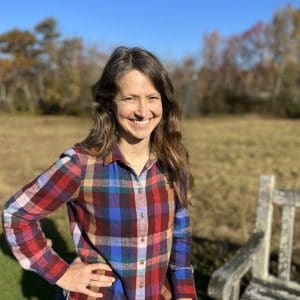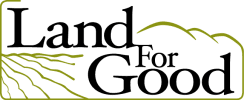en español: Una nueva guía en lenguaje sencillo sobre cómo encontrar, evaluar y obtener tierras de cultivo

When looking for farmland to start or expand a farm business, there are lots of steps to find the right piece of land. Clarifying your vision and needs, exploring land tenure options, and conducting a land search are some of these steps. A new guide, How To Find, Assess, and Secure Farmland, is clearly written to assist farmers through these steps and offers tips and resources to farmers seeking land.
This guide is presented in “plain language” to make the topic easily understandable. Plain language provides clear, straightforward, and accessible text to help readers confidently act upon what is learned. Real-life examples of people practicing the information are included.
Finding farmland that works for you is a process that takes time. For some farmers it takes months, and for others it takes years. You may find land that is good enough to get started, and then move to other locations or expand in the future. Keep an open mind, know what you need, and start as early as possible before the growing season begins. The land search can take a lot of time to find what is right for you and your business.
Co-authored by New Entry Sustainable Farming Project and Land For Good, the guide will take you through the basic steps to find, assess, and secure farmland. There are also tips, resources, and a helpful glossary of terms. For example:
What is land tenure? Land tenure describes how you have access to your land and how you control it. For instance, you can own land, lease land for a short period of time, or lease land for a long period of time.
Use the worksheets in the guide to better understand your farm business needs, what you require for your farmland, and get started with your search.
This is material is based upon work supported by USDA/NIFA under Award Number 2018-70027-28588.
– – –
Una nueva guía en lenguaje sencillo sobre cómo encontrar, evaluar y obtener tierras de cultivo



A la hora de buscar una tierra de cultivo para iniciar o ampliar una granja, hay que dar muchos pasos para encontrar el terreno adecuado. Aclarar su visión y sus necesidades, explorar las opciones de tenencia de la tierra y realizar una búsqueda de tierras son algunos de estos pasos. Una nueva guía, Cómo encontrar, evaluar y obtener tierras de cultivo está redactada con claridad para ayudar a los agricultores a seguir estos pasos y ofrece consejos y recursos a los agricultores que buscan tierras.
Esta guía se presenta en “lenguaje sencillo” para facilitar la comprensión del tema. El lenguaje sencillo proporciona un texto claro, directo y accesible para ayudar a los lectores a actuar con confianza sobre lo aprendido. Se incluyen ejemplos reales de personas que ponen en práctica la información.
Encontrar tierras de cultivo que se adapten a sus necesidades es un proceso que lleva tiempo. A algunos agricultores les lleva meses, y a otros años. Puede encontrar un terreno lo suficientemente bueno para empezar y luego trasladarse a otros lugares o ampliarlo en el futuro. Mantenga la mente abierta, sepa lo que necesita y empiece lo antes posible, antes de que empiece la temporada de cultivo. La búsqueda de terrenos puede llevar mucho tiempo hasta encontrar lo que más le conviene a usted y a su empresa.
Co-escrito por “New Entry Sustainable Farming Project” y “Land For Good”, la guía lo llevará a través de los pasos básicos para encontrar, evaluar y obtener las tierras de cultivo. También hay consejos, recursos y un glosario útil de los términos. Por ejemplo:
¿Qué es la tenencia de la tierra? La tenencia de la tierra describe cómo se accede a ella y cómo se controla. Por ejemplo, puede ser propietario de un terreno, arrendarlo por un periodo corto de tiempo o arrendarlo por un periodo largo.
Utilice las hojas de trabajo de la guía para comprender mejor las necesidades de su empresa agrícola, lo que necesita para su tierra de cultivo y empezar a buscar.
Este material se basa en el trabajo respaldado por USDA/NIFA con el número de adjudicación 2018-70027-28588.





